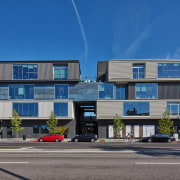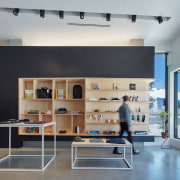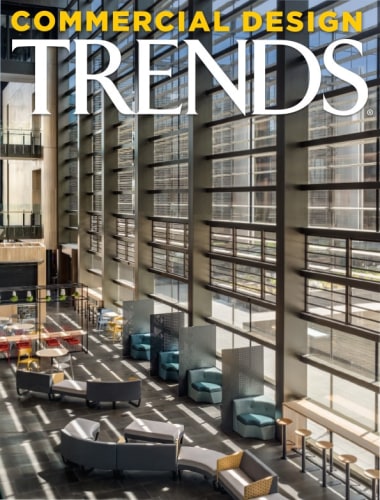Mixed-use office, retail and hospitality hub takes design cues from railyard previously on site
New and adaptively reused old buildings comprise the new Platform mixed-use hub, which achieves harmony through a common palette of semi-industrial finishes

In the urban environment, buildings may rise, flourish, fall into disuse, be replaced and become quickly forgotten. So it’s a welcome gesture when a new mixed-use hub takes its architectural and design cues from what had gone before on the site.
Created by architecture firm Abramson Teiger, Platform is a character-rich retail, hospitality, design and office hub, comprising six diverse buildings wrapped around a central courtyard.
Design principal Trevor Abramson says the site for Platform is located in what had been a blighted, semi-industrial area of LA’s Culver City.
“This precinct had fallen behind and was in need of new life – this was the perfect opportunity to inject the neighbourhood with a fresh, bold design.
“And Platform’s semi-industrial feel and eclectic blend of new and repurposed buildings creates a unique urban atmosphere that’s an ideal response to the setting,” says Abramson.
Rather than turn its back on the past, the design and retail hub celebrates the city precinct’s recent past in all its sometimes gritty charm.
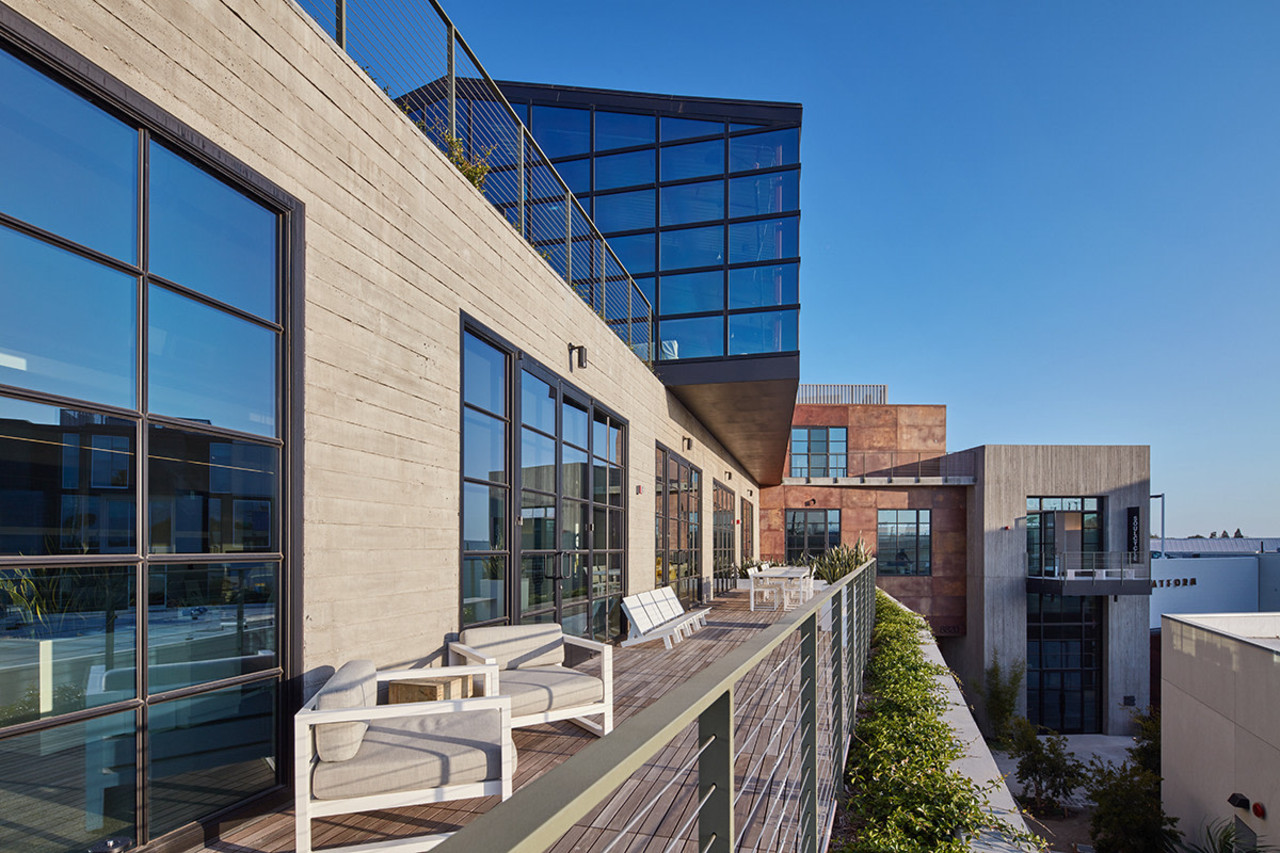
One of Platform’s most stand-out buildings is Boxcar, which includes retail at ground level and office floors above. New it may be, but the design for Boxcar is rooted in the site’s rail freight history.
“The site’s colourful past dates back to its earlier existence as a busy railroad station with freight boxcars, constantly coming and going – hence the name of the hub and the Boxcar building itself.”
Boxcar’s stacked architectural elements echo the look of scattered, abandoned shipping containers – both in their individual container-like forms and in their semi-industrial corrugated metal facades.
“To further evoke the sense of strewn containers, there’s a random element to the design, seen in the blued metal panel in the mid section of the facade,” Abramson says.
Across an internal street from Boxcar stands the new Washington Arts Building – essentially a carpark building, although that’s not how it reads from the street. As the name implies, the building’s almost as much about art as about visitor parking.
Its functionality is set back behind sculptural, slender horizontal blades, punctuated by protruding glass boxes intended to showcase local designers’ works – or simply act as retail displays.
Plus, the side of the Washington Arts Building has a colourful wall-sized graffiti-like mural, by artist Jen Starck, referencing the typical spray can artistry that creeps over a disused industrial environment.
And then there’s Abramson Teiger’s intelligent use of what’s already there – after all, the greenest building is one that’s already built.
“In addition to its freight train history, the project site more recently acted as a car dealership. We integrated some elements of this history as well, with an existing Landmark Repair Shop retained and reconsidered as shops and restaurants,” says Abramson. “We removed the garage doors from the rows of car bays and replaced them with glass storefronts – and these slots are the store interiors.”
The old car dealership’s expansive showroom was also adaptively reused, its high ceiling spaces intact, and renamed the Showroom Building.
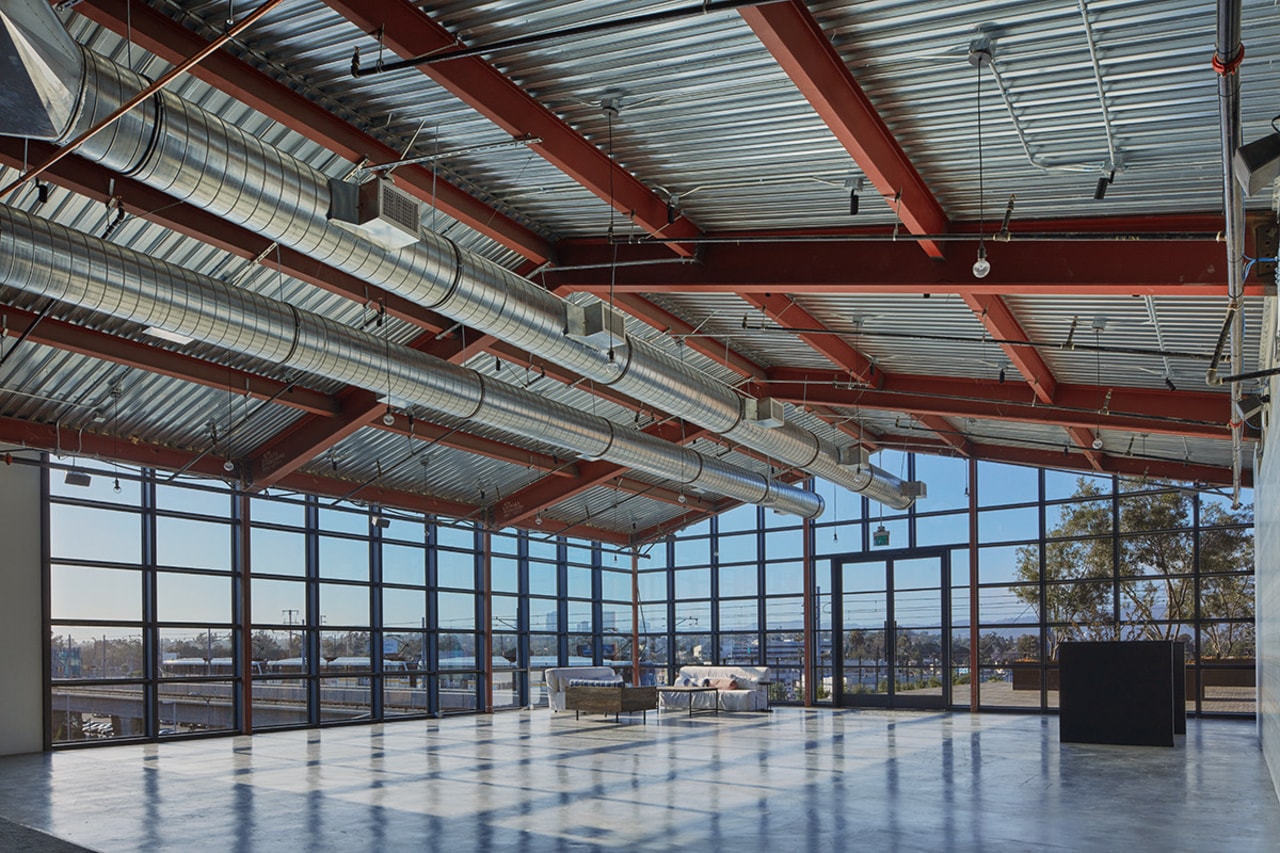
Another prominent dimension to Platform is Greenhouse. Perched on the top floor of another building, this glass and metal volume has an outdoor component and enjoys distant views of the Hollywood Hills. The space gets its name from the concept of the abandoned, overgrown boxcar yard, with Greenhouse a reinvention of this idea – another jigsaw piece in the interpretation of the site’s history.
So as well as a thirst for design innovation and the sense of capturing local history, what draws together this group of buildings, some old, some new, some small, some several storeys? The answer lies in Platform’s surprising material palette.
“Charred wood, poured concrete, pebbled facades, corrugated metal and corten steel make up much of the material palette,” says Abramson. “These semi-industrial materials were chosen to coordinate with the design narrative and for their relatively low maintenance and cost efficiency.”
The other design glue that holds Platform together is the sheer verve and diversity of its retail and hospitality. Whether, slotted into repurposed car bays, looking across to a wall-size graffiti splash or backdropped by rusting steel, many of LA’s trendiest names are represented here. There’s a showroom devoted to sneakers, stylish outdoor eateries, fine dining at Greenhouse and myriad designer clothing brands. And of course all these businesses are fed by Platform’s office component as well as its steady stream of external patrons.
In a city that famously prides itself on colour and diversity, Platform still manages to stand apart amongst Los Angeles’ crowd of mixed-use venues.
Credit list
Project
Developer
Civil engineer
Quantity surveyor
Landscaping
Architect
Construction
Mechanical and electrical engineer
Earthworks
Story by: Charles Moxham
Photography by: Benny Chan and Nico Marquez
Home kitchen bathroom commercial design
Classic looks, contemporary efficiency
Diving into nature
Personality plus
Commercial Design Trends Vol. 34/1C
Flexibility has become the keyword in the workplace – both as a business process and in the physical design of our work ...
Read More